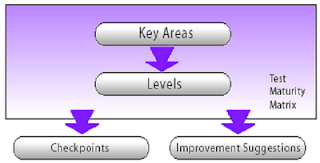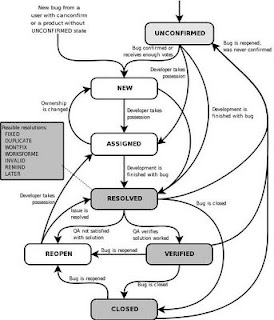Over the years, developing software has been compared to many familiar activities - an art, a science, even a manufacturing process. What all of these comparisons miss is the social dimension: software is best developed by a team of people working together, reacting and responding to each other in order to achieve the best outcome. Jazz is an IBM initiative to help make software delivery teams more effective. Inspired by the artists who transformed musical expression, Jazz is an initiative to transform software delivery making it more collaborative, productive and transparent.
The Jazz initiative is composed of three elements:
- An architecture for lifecycle integration
- A portfolio of products designed to put the team first
- A community of stakeholders
An architecture for lifecycle integration
Jazz products embody an innovative approach to integration based on open, flexible services and Internet architecture. Unlike the monolithic, closed products of the past, Jazz is an open platform designed to support any industry participant who wants to improve the software lifecycle and break down walls between tools.
The Jazz integration architecture is designed to give organizations the flexibility to assemble their ideal software delivery environment, using preferred tools and vendors. More than that, it allows them to do so with the flexibility to evolve their environment as their needs change, to move at their own pace, and not to be hindered by the traditional brittle and restricted integrations associated with traditional tools. The Jazz Integration Architecture defines a common set of Jazz Foundation Services that can be leveraged by any Jazz tool, and explains the rules of the road for accessing and utilizing Jazz services. It also incorporates specifications defined by the Open Services for Lifecycle Collaboration project, an independent, multi-vendor effort to define a set of protocols for sharing information across multiple tools and vendors.
A portfolio of products designed to put the team first
The Jazz portfolio consists of a common platform and a set of tools that enable all of the members of the extended development team to collaborate more easily. This reflects our central insight that the center of software development is neither the individual nor the process, but the collaboration of the team. Our newest Jazz offerings are:
-
A collaborative work environment for developers, architects and project managers with work item, source control, build management, and iteration planning support. It supports any process and includes agile planning templates for Scrum and the Eclipse Way.
-
A web-based test management environment for decision makers and quality professionals. It provides a customizable solution for test planning, workflow control, tracking and reporting capable of quantifying the impact of project decisions on business objectives.
-
A requirements definition solution that includes visual, easy-to-use elicitation and definition capabilities. Requirements Composer enables the capture and refinement of business needs into unambiguous requirements that drive improved quality, speed, and alignment.
A community of stakeholders
Jazz is not only the traditional software development community of practitioners helping practitioners. It is also customers and community influencing the direction of products through direct, early, and continuous conversation. We are doing much of our development on jazz.net, out in the open.
Once you join, you can communicate with the development teams, track the progress of builds and milestones, give us direct feedback on what is working and what is not, and submit and track defect and enhancement requests. You also have full visibility to our detailed plans, status, and progress. At the core of these benefits, you can experience using our product Web interfaces and see us using our products to develop our products. The benefit of this transparency is that it allows you and other customers to become part of a continuous feedback loop that drives development decisions. By providing your feedback early and often, you can understand and influence release direction and priorities before these decisions are locked down.
Objectives
Our goal is to provide a frictionless work environment that helps teams collaborate, innovate, and create great software. To that end, we are focusing on driving fundamental improvements in team collaboration, automation, and reporting across the software lifecycle.
Collaboration
Traditionally, software development has been tooled as if it were a tug-of-war between the productivity of individuals and the automation of processes. Business stakeholders were lucky if they got any consideration at all between major "reviews" and "handoffs". Jazz tools reflect the insight that the center of software development is neither the individual nor the process, but the collaboration within the team. It also recognizes that the team extends beyond the core practitioners to include everybody with a stake in the success of an initiative. A goal of the Jazz initiative is to enable transparency of teams and projects for continuous, context-sensitive collaboration that can:
- Promote break-through innovation
- Build team cohesion
- Leverage talent across and beyond the enterprise
Automation
Our research shows that nearly all organizations want to reduce bureaucratic roadblocks to development by automating tedious and error-prone tasks and burdensome data entry. Yet they also need to maintain or improve process consistency and governance, and increase insight into real project progress. A goal of the Jazz initiative is to automate processes, workflows and tasks so that organizations can adopt more lean development principles at the pace that makes sense for them. The Jazz initiative endeavors to:
- Improve the support and enforcement of any process, including agile processes
- Reduce tedious and time-consuming manual tasks
- Capture information on progress, events, decisions and approvals without additional data entry
Reporting
Getting fast access to fact-based information is essential to any choreographed work effort. But all too often, software development status is gathered through a tedious, manual reporting effort that is out of date by the time it is collected, correlated, and delivered. The Jazz initiative is focused on delivering real-time insight into programs, projects and resource utilization to help teams:
- Identify and resolve problems earlier in the software lifecycle
- Get fact-based metrics -- not estimates -- to improve decision making
- Leverage metrics for continuous individual and team capability improvement
Courtesy: http://www.jazz.net



